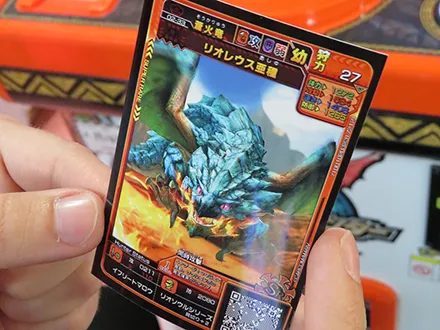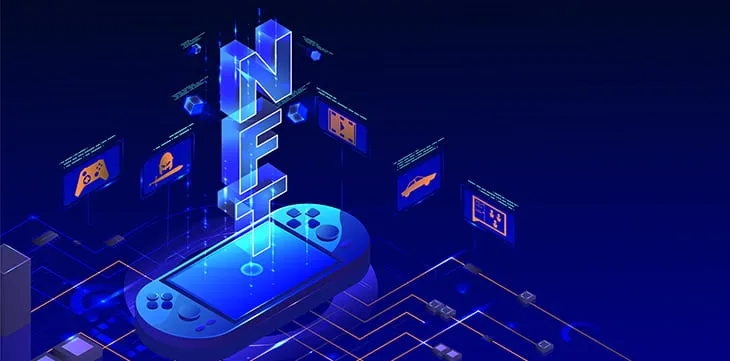|
Getting your Trinity Audio player ready...
|
The title of this week’s article should stir up many emotions, given that NFTs or non-fungible tokens have been the new hot topic since last year. There has been a lot of activity in this space, mainly centered around artists issuing digital art or other digital ‘collectible’ types of tokens in an attempt to create a lot of speculative value to add to the already overheated market furor. At times it can be hard to see through the hype for the actual innovations that may lie underneath.
NFT assets essentially fall into two general categories: NFT digital representations of real-world chattel and NFT digital collectibles. Most of the excitement and innovation are being seen in the latter category. Of that group, projects can be divided into two subcategories: digital art and NFT games with collectible virtual assets.
This article will focus specifically on the application of NFT technology for games. The idea of having some sort of collectible as part of a game is nothing new. The idea likely goes as far back as collectible baseball cards, seeing its heyday with Pokemon and Magic the Gathering collectible card games. In fact, this kind of game still enjoys widespread popularity in Japan, where collectible card games have gone digital, with physical cards containing QR codes or NFC chips that allow for integration into arcade machines so that players can keep their own unique set of players in a game, and challenge others in a virtual battleground, while still keeping the feel of a head-to-head match.


Long before NFTs were busy creating digital versions of physical assets (usually to make them more easily transferable), Japan has had the inverse NFT, or physical versions of digital game assets. These allow for customization of game experience to the players, depending on the players’ assets. This is, of course, required on game platforms like public arcades, which lack login or player accounts and where there is no ability to store personal user information. Therefore, physical cards act as a simple way of holding state—namely, the state of the cards that you happen to have in your possession.
So, what do NFTs of the current trend have to offer? What is the appeal of having a digital version of an already virtual asset? These are good questions. There are basically two benefits to using NFTs in a game. Firstly it allows for more play-to-earn models to be realized, and secondly, it allows for potential persistence of virtual assets beyond the scope of the originating game itself. Let’s explore the first aspect a little more in detail.
Play-to-Earn
The idea of play-to-earn is to incentivize players by allowing them to generate an income stream by engaging with their game. This model has been most famously exploited in the years of Warcraft 3 and other MMORPGs, which allowed many players online to play as a group and form online ‘clans.’ This first created the notion of a game community, and with online communities came the advent of socially working together to achieve common goals.
As is common with games such as this, there exist large in-game economies, together with an in-game currency to ‘measure success,’ similar to the function that money serves in the real world. Like the real world, economic concepts such as division of labor and specialization naturally evolve as the efficiency gain experienced by those who engage in this activity is hard to deny. Thus, the first play-to-earn gaming models were not something that game designers invented explicitly, but evolved out of large online game communities where some game players were willing to pay others to ‘do the laborious work’ for them in exchange for cash.
For instance, a relatively new, impatient, but wealthy player may opt to pay $100 to someone online to just buy their higher-level game character to shortcut the otherwise laborious task of playing through the lower levels of the game before they could access certain quests where their friends were already able to access. Alternatively, players could just offer to pay real-world money in exchange for in-game items or in-game currency.
This practice is commonly referred to as ‘RMT’ or real money transfer and is highly frowned upon by game designers because it inevitably destabilizes the game economy. Game publishers employ many different strategies to discourage this sort of behavior. However, despite their efforts, ‘gold farmers’ still remain a lucrative profession, as players in developing world countries were more than happy to sell their free time to play games and ‘grind up’ characters for sale to players in first world countries. Thus the first play-to-earn games were born.
NFTs allow for this model to be built into the game mechanics itself. Instead of trading characters by way of passing logins/passwords to accounts between buyers and sellers, NFTs formalize the trading process by making in-game items and potentially character assets that can be freely traded either within the game or, more likely, outside of the game in secondary markets, where they can usually fetch a much higher price due to hype and speculation. In a way, if ‘gold farming’ was caffeine, tradable NFTs are methamphetamines. Not only limited to template characters ground up to certain levels, NFTs normally carry with them some notion of uniqueness and scarcity, with some having a scarcity model built into the game itself. This results in NFTs having a sort of ‘company stock’ quality, and collecting NFT game assets can become somewhat similar to collecting art or, more appropriately, playing the stock markets.
This, of course, has short-term positive aspects in that it accelerates gamer interest and the number of players in a game, but in the long run, if not handled appropriately, it can act to erode the game balance and result in a non-viable game.
What about NFTs that are not asset-based?
Besides their use as virtual ‘beanie babies,’ NFTs games typically also include an in-game currency to add some control over its internal economy. While necessary to effect play balancing, creating an in-game economy with a traceable token outside of the game also comes with it some challenges.
While many NFT-based games and startups have been observed, many of them soon fall prone to the complications that come with creating a token economy inside their games. Either the tokens are an incentive model in which players can earn cash by selling the collectibles or ‘boosts’ outside of the game, or they are simply a way to pay back the player by being a form of currency itself.
The way that an NFT game can generate cash flows are several:
1) Sell in-game tokens (currency or assets) before the game actually launches as a way to raise funds to build the game itself. This is the ICO aspect of NFT game outfits, and its practice is legally dubious as it borders somewhere between pre-selling a game and issuing a security.
2) Issue a governance token to the public markets and allow for the public trading of it to generate a value to the price of the game commodity. The token should have no use beyond exerting some control over some aspect of the game outside of the game economy itself.
3) Sell in-game currency for fiat, which is spent in-game for asset purchases or engaging in activities. This is how Roblox and traditional games with in-game economies do it.
RMT and outside trading of in-game currency
While #3 is the most common and tried and true way of implementing a play-to-earn model, the only problem occurs when the in-game currency is traceable in secondary markets. Not only does this introduce potential issues with criminal elements using the game currency trade as a cover for money laundering, but it also distorts the game economy by way of coupling with the outside economy. Most successful games such as Roblox handle this by tightly controlling the rate and amount of in-game currency that can be issued and redeemed for real money.
NFTs do away with this control.
Quite the opposite, NFTs are built to allow for outside and independent trading of assets, potentially outside of the issuer’s control. This greatly disturbs the economy in the game, as it allows people to ‘pay-to-win1‘. Allowing outside purchasing of a game token allows people to do better in the game the more money they pay into the game. While this is good for the gaming company, it is long-term detrimental to the gaming economy. It makes it not very fun for newcomers and unbalances the game.
Games that have introduced in-game currencies that are freely traceable on the secondary market, such as Axie Infinity, have had to implement tight controls on the inflation rates of the token to manage their currency, much like a central bank of a country would have to. Despite this, they have already hit up against some severe difficulties. Guess managing an entire economy, even a virtual one, isn’t as easy as one would think, eh?
NFT gaming is certainly a space with a huge amount of potential. With the advent of blockchains and token platforms on top of them, we now have the ability to connect game economies in a way that was impossible in the past. But with the opening of borders and the explosion of innovation that we will likely see, there looms an equally harrying possibility of missteps that will lead many investors and gamers into squandering a lot of their savings and hard-earned cash.
With the introduction of NFTs, we have introduced speculative markets to the game economies. Where once we were worried about the economic side effects of large sections of the able-bodied population wasting their day playing games in a sweatshop for a living, now we face an equally perilous reality that this market, turbo-charged with greed/fear of open markets, could lead to something even worse. But at the same time, the technology could eventually lead to a merging of in-game economies and real-world economies in ways that we can’t even imagine yet.
Time will tell.
/Jerry Chan
WallStreet Technologist
***
NOTE:
[1] While Play-to-Earn is normally accepted as a positive model for games, Pay-to-Win (where those who pay the most real-world money have the most advantages in the game) is universally seen as a detrimental model.
Watch: CoinGeek New York panel, eSports & Blockchain: The Next Level of Professional Gaming

 07-05-2025
07-05-2025 





